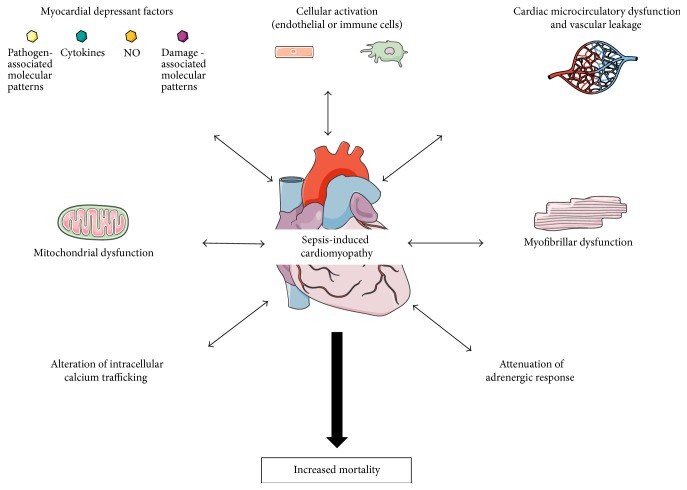Figure 1.
Main pathophysiological mechanisms of sepsis-induced cardiomyopathy. During sepsis, recognition of pathogen-associated molecular patterns by immune cells activates inflammation pathways and the release of myocardial depressant factors in the extracellular space. The subsequent activation of endothelial cells leads to alterations of microcirculatory perfusion and vascular leakage that are implicated in sepsis-induced myocardial dysfunction. Among intracellular mechanisms, myofibrillar dysfunction, alterations of calcium trafficking, attenuation of adrenergic response, and mitochondrial dysfunction seem to play important roles in sepsis-induced cardiomyocyte impairment. NO: nitric oxide.

